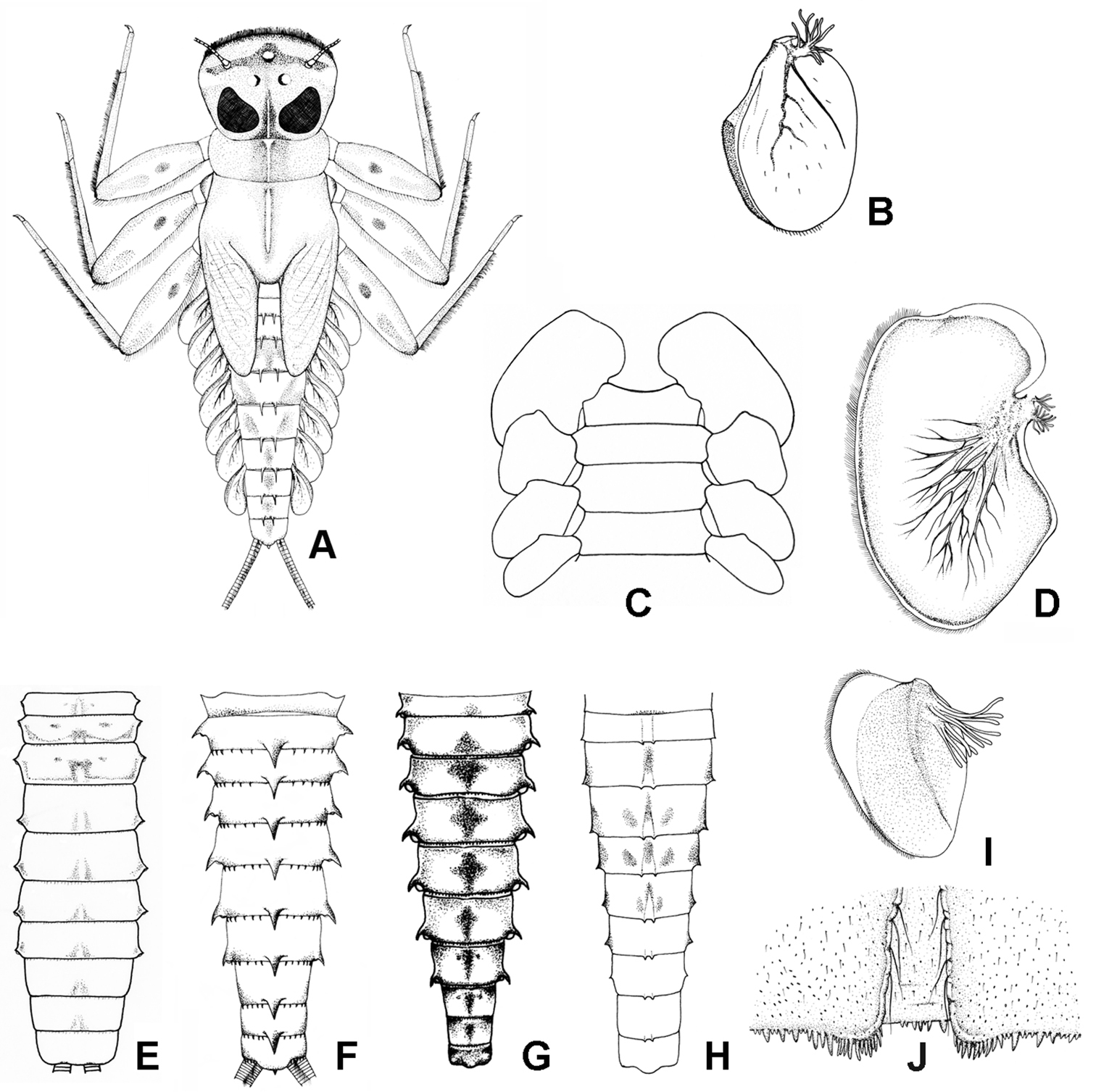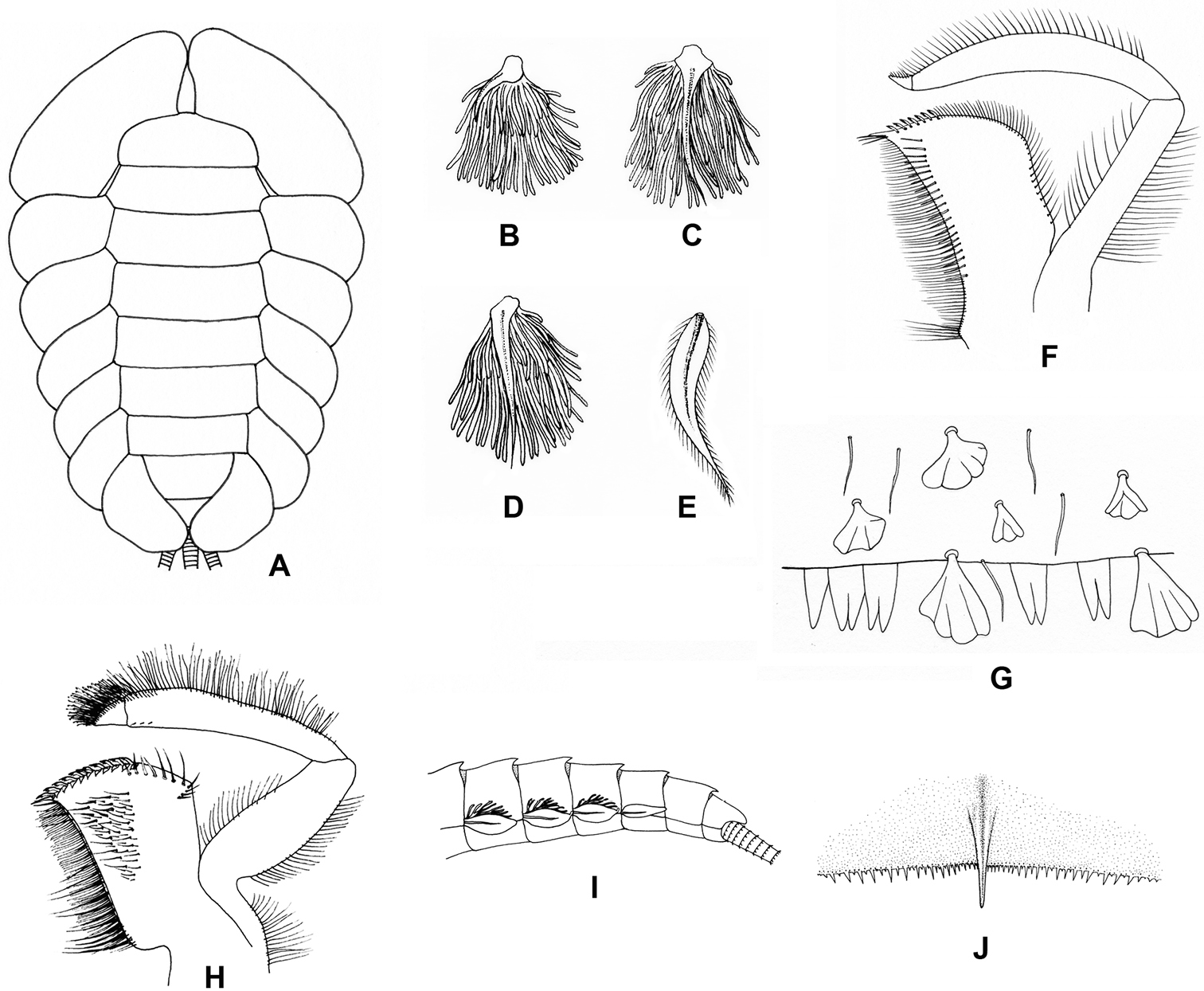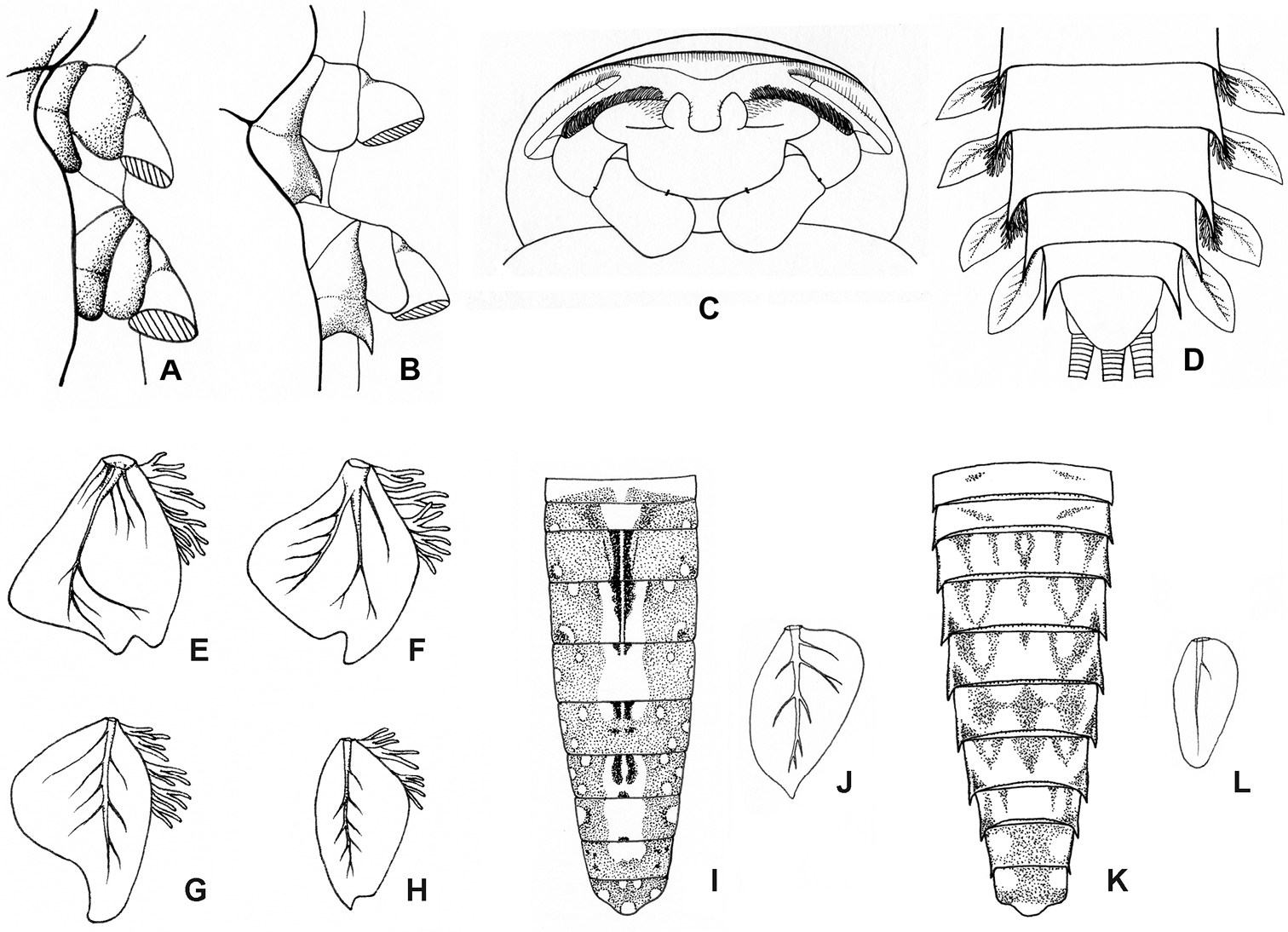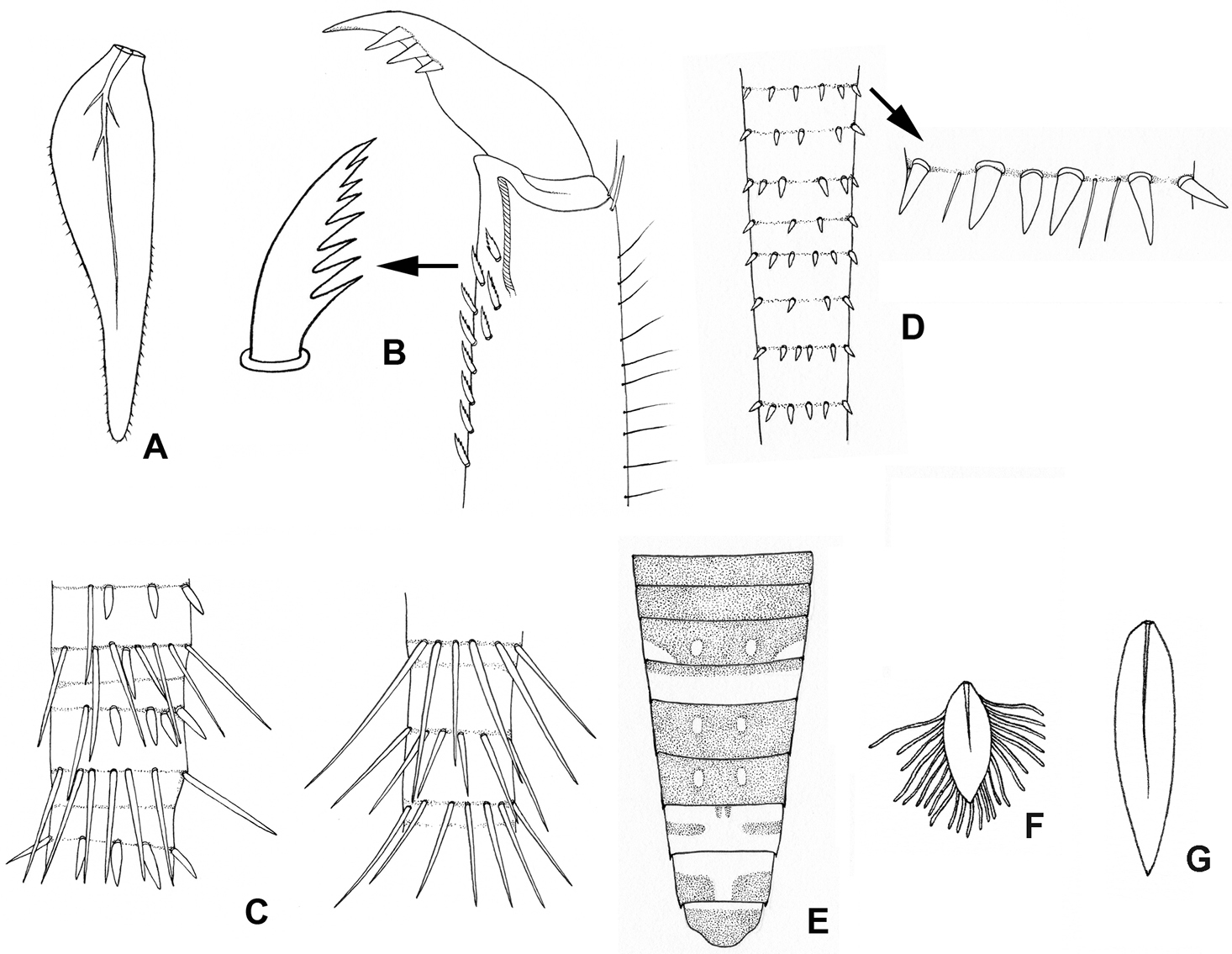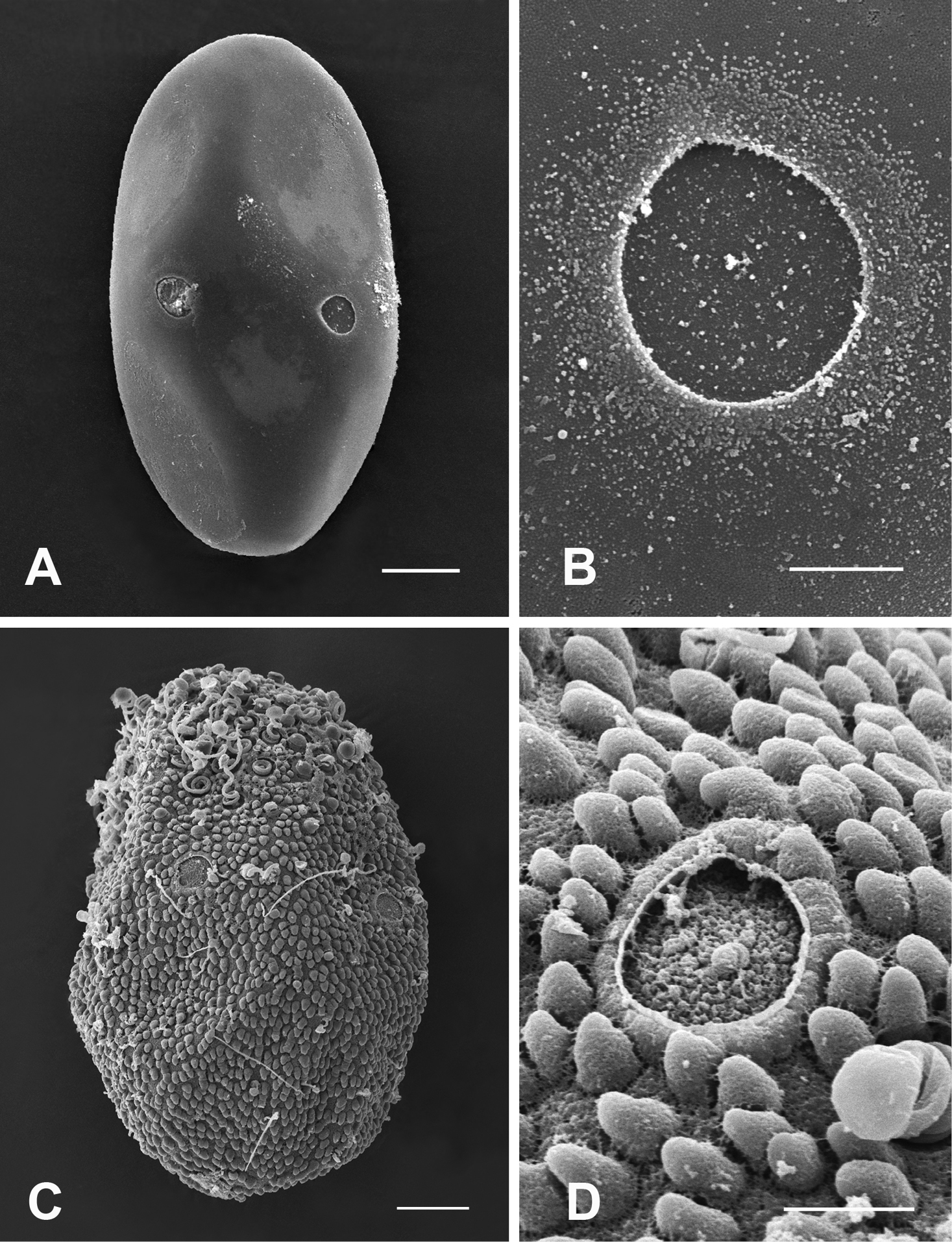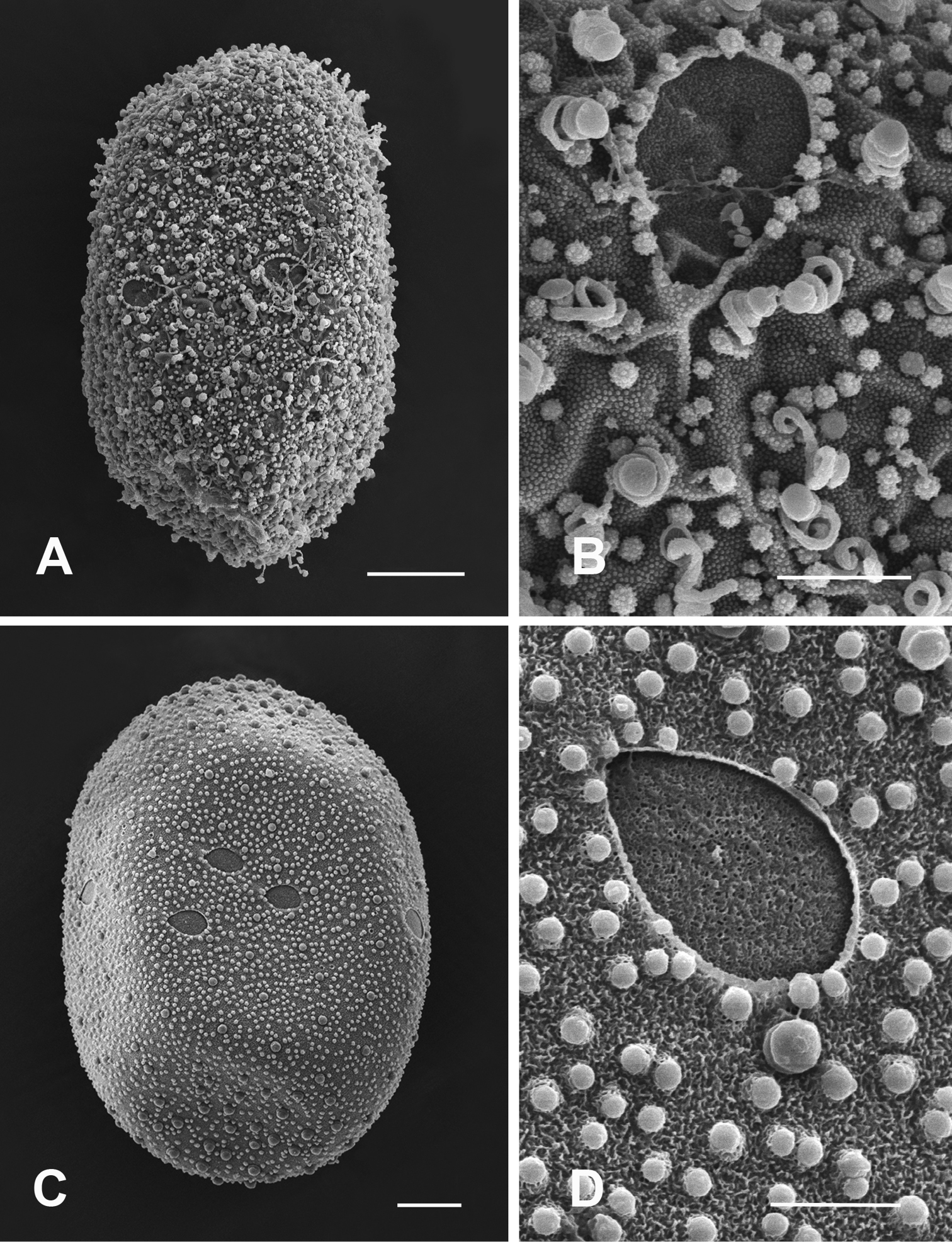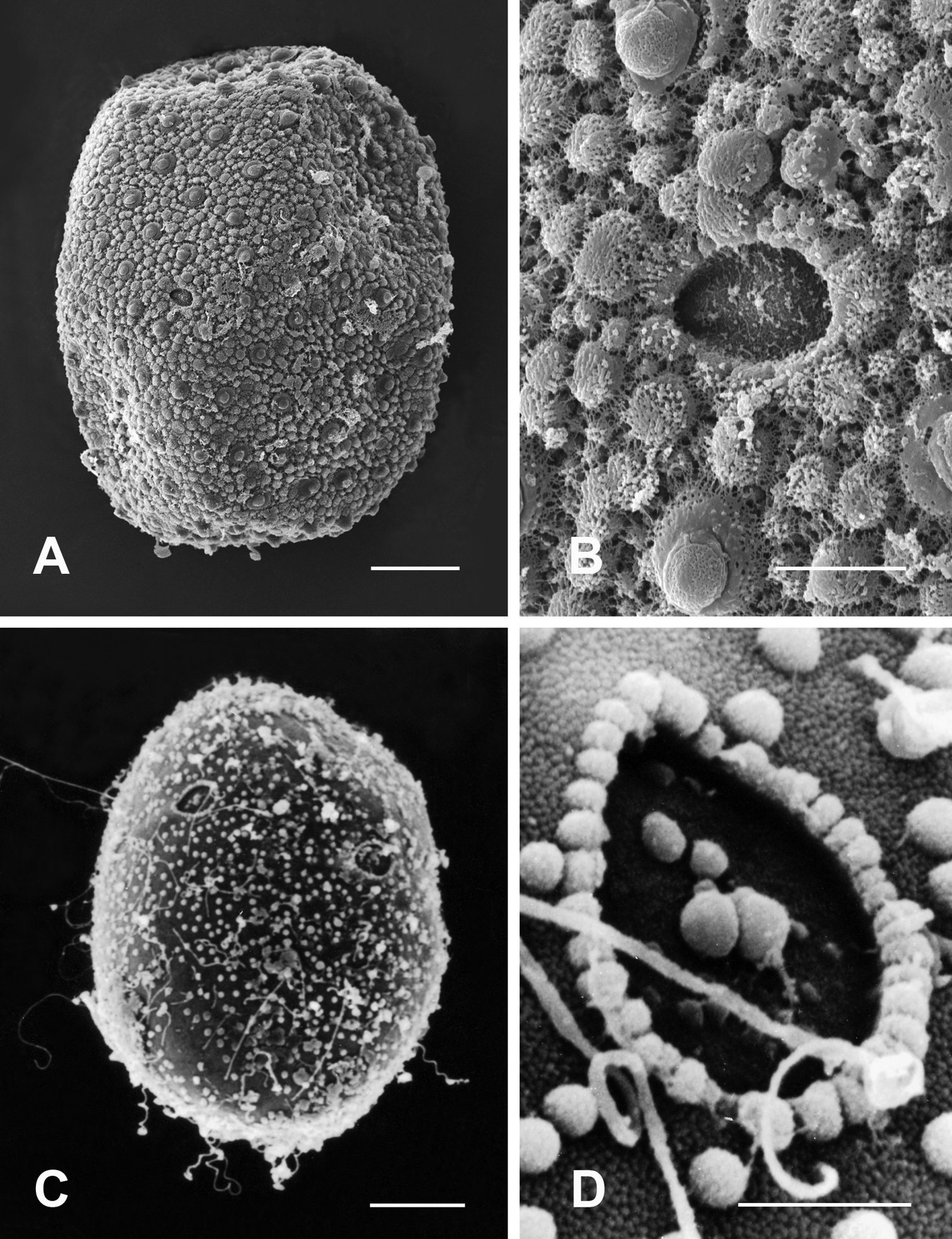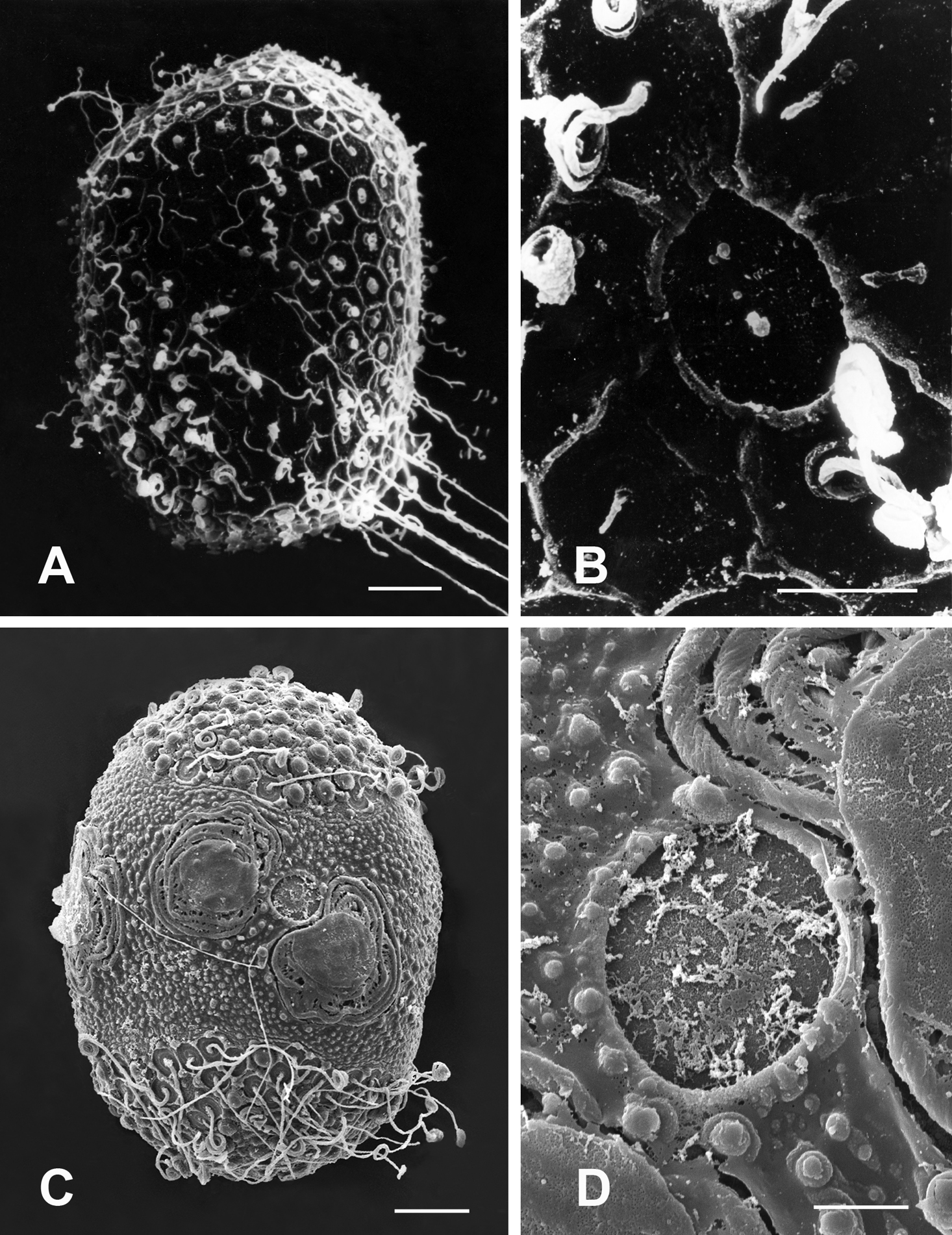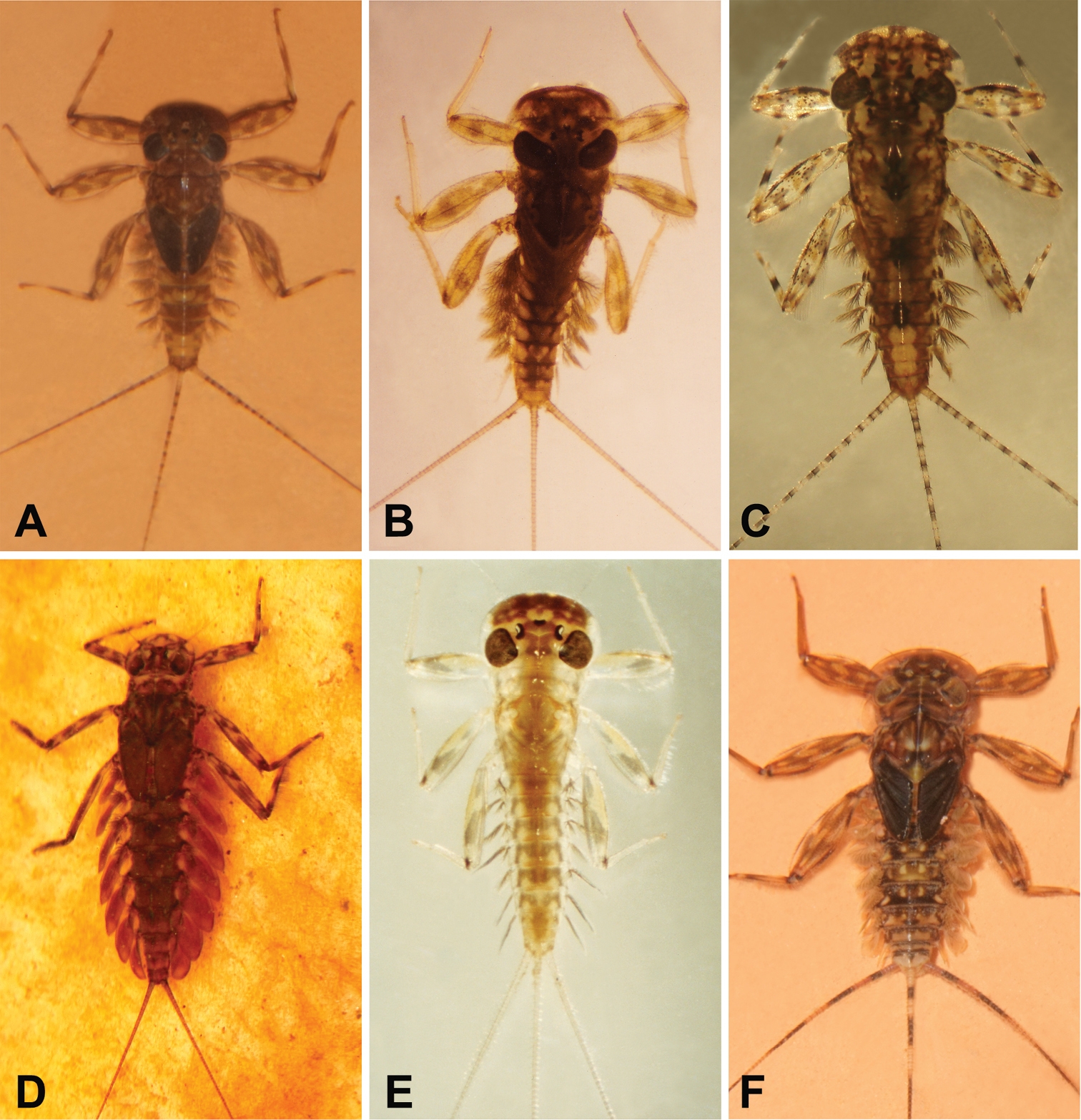






(C) 2013 Boonsatien Boonsoong. This is an open access article distributed under the terms of the Creative Commons Attribution License 3.0 (CC-BY), which permits unrestricted use, distribution, and reproduction in any medium, provided the original author and source are credited.
For reference, use of the paginated PDF or printed version of this article is recommended.
Nine genera and twenty-two species of heptageniid mayflies from Thailand are defined in this present work as well as one suggested further subgenus, Compsoneuria (Siamoneuria) kovaci (species “incertae sedis”) including some particular characters. Taxonomic remarks, diagnoses, line drawings of key characters, distribution, habitat and biological data, and a larval key to the genera and species are provided. The chorionic eggs of eight genera and eight species were observed and shown using a scanning electron microscope.
Mayflies, Heptageniidae, Thailand, key
Heptageniidae is a family of mayflies with around 509 described species and distributed mainly in the Holoarctic, Oriental, and Afrotropical regions (
Heptageniid mayflies are one of the most abundant and common components of benthic communities in Thai running waters. The larvae inhabit slow to fast flowing streams where they occur on the surface of rocks, logs, vegetation, and leaves. Many heptageniid species have been used as indicators of anthropogenic disturbance because they are relatively intolerant of pollution change and as sensitive indicators of organic pollution (
Heptageniidae have been recorded from Thailand by
In the following key and text, abbreviations are as follows: alt (altitude), asl (above sea level), μS/cm (microsiemens per centimeter), comb. (combination), M (male imago), F (female imago), mount. (mountainous), Ms (male subimago), Fs (female subimago), NP (National Park), orig. (original), sec. (second), WS (Wildlife Sanctuary).
| 1 | Median caudal filament absent (Fig. 1A, 9D) | Epeorus, 2 |
| – | Median caudal filament present | 8 |
| 2 | Lamellae of gills 2-7 with anal ribs arched (Fig. 1B) | subgenus Belovius, 4 |
| − | Lamellae of gills 2-7 without anal ribs arched | 3 |
| 3 | Lamellae of gills 1 greatly extended beneath the abdomen (Fig. 1C–D) | subgenus Iron, 5 |
| – | Lamellae of gills 1 somewhat extended beneath the abdomen (Fig. 1I) | subgenus Epeorus, 6 |
| 4 | Abdominal terga 2–9 each with long, acute median spine on posterior margin (Fig. 1F) | Epeorus unicornutus Braasch |
| – | Abdominal terga 2–9 each without acute median spine on posterior margin (Fig. 1G) | Epeorus khayengensis Boonsoong & Braasch |
| 5 | Abdominal terga with paired long acute submedian spines | Epeorus martinus Braasch & Soldán |
| – | Abdominal terga without paired acute submedian spines; foretibiae relatively long; median dark brown on the abdominal terga | Epeorus thailandensis Braasch & Boonsoong |
| 6 | Pair of submedian spines on terga 2-9 relatively long (Fig. 1A) | Epeorus aculeatus Braasch |
| – | Pair of submedian spines on terga 2-9 relatively short | 7 |
| 7 | Paired tubercles on terga rounded, blunt bristles densely rowed | Epeorus bifurcatus Braasch & Soldán |
| − | Paired tubercles on terga more rounded, pointed bristles (Fig. 1H, 1J) | Epeorus inthanonensis Braasch & Boonsoong |
| 8 | Gill-pairs 1 meet or overlap ventrally to form a friction disc (Fig. 2A) | Rhithrogena siamensis Braasch & Boonsoong |
| – | Gill-pairs 1 not meeting ventrally and not forming a ventral friction disc | 9 |
| 9 | Lamellae of gills 1 minute, lamellae of gills 2-7 long, narrow and sharply pointed (Fig. 2B–E); ventral surface of maxillae with setae in row (Fig. 2F); abdominal terga with fan-shaped robust setae (Fig. 2G) | Trichogenia maxillaris Braasch & Soldán |
| – | Lamellae of gills 1 similar in shape and size to other gills; gill lamellae usually not as above; ventral surface of maxillae with scattered setae (Fig. 2H); abdominal terga with fine setae only | 10 |
| 10 | Abdominal terga with median dorsal ridge (Fig. 2I–J); claws with denticles | Notacanthurus baei Braasch & Boonsoong |
| – | Abdominal terga without median dorsal ridge | 11 |
| 11 | Supracoxal sclerites rounded or bluntly pointed (Fig. 3A) | 15 |
| – | Supracoxal sclerites sharply pointed (Fig. 3B) | 12 |
| 12 | Anterior margin of head capsule distinctly thickened (Fig. 3C); posterolateral spines of abdomen well developed (Fig. 3D) | Thalerosphyrus sinuosus Navás |
| – | Anterior margin of head capsule not thickened; dorsal view of abdomen; posterolateral spines of abdomen small (Fig. 3I, K) | Compsoneuria, 13 |
| 13 | Shape of gills 3-6 without emarginations | 14 |
| – | Shape of gills 3-6 with emarginations (Fig. 3E–H) | Compsoneuria (Siamoneuria) kovaci Braasch |
| 14 | Dorsal view of abdomen as Fig. 3I; shape of gill 7 leaf-like and pointed apically (Fig. 3J) | Compsoneuria thienemanni Ulmer |
| – | Dorsal view of abdomen as Fig. 3K; shape of gill 7 lanceolate and rounded apically (Fig. 3L) | Compsoneuria langensis Braasch & Boonsoong |
| 15 | Gills 7 slender and pointed (Fig. 4A); robust setae on inner surface of hindtarsi pectinate (Fig. 4B) | Asionurus primus Braasch & Soldán |
| – | Gills 7 usually rounded apically, never as long and narrow as above; setae on inner surface of tarsi either simple or fimbriate, never pectinate | 16 |
| 16 | Cerci bear spines as well as lateral bristles and segments of the cerci with stout spines alternate with those lacking such spines (Fig. 4C); gills 1–7 with row of sparse marginal set | Rhithrogeniella tonkinensis Soldán & Braasch |
| – | Cerci not as above (Fig. 4D); gills 1–7 without row of sparse marginal setae | Afronurus, 17 |
| 17 | Body and head with indistinct large pale dots and markings dorsally | 18 |
| – | Body and head with distinct large pale dots and markings dorsally (Fig. 4E) | 19 |
| 18 | Gills 1 banana-shaped | Afronurus namnaoensis Braasch & Boonsoong |
| – | Gills 1 symmetrically pointed ovaloid (Fig. 4F) | Afronurus gilliesiana Braasch |
| 19 | Gills 7 unsymmetrically ovaloid, obtusely pointed apically | Afronurus rubromaculatus You, Wu, Gui & Hsu |
| – | Gills 7 narrowly lanceolate (Fig. 4G) | Afronurus rainulfiana Braasch |
Epeorus is widely distributed in the Holarctic, northern portion of the Neotropical, Palaearctic, and Oriental regions (
A Habitus of Epeorus aculeatus Braasch, 1990 B lamellae of gills 7 of Epeorus khayengensis Boonsoong & Braasch, 2010 C–E ventral view of abdomen (C), abdominal gills 1 (D) and abdominal terga of (E) Epeorus thailandensis sp. n. F abdominal terga of Epeorus unicornutus Braasch, 2006 G abdominal terga of Epeorus khayengensis Boonsoong & Braasch, 2010 H–J abdominal terga (H), lamellae of gills 1 (I) and tergum VII (J) of Epeorus inthanonensis Braasch & Boonsoong, 2010.
http://species-id.net/wiki/Epeorus_khayengensis
Figs 1B, 1G, 5A–B, 9DUnknown.
Egg chorion of Epeorus khayengensis very smooth without any peculiar structure (Fig. 5A), 2-3 micropyles visible in the equatorial area (Fig. 5B).
Huai Khayeng stream (Thong Pha Phum district, Kanchanaburi province).
The larva of Epeorus khayengensis (Fig. 9D) can be distinguished from that of othercongeners by abdominal terga 2–9 without long acute median spine on posterior margin, but bearing long hair-like setae.
The larva of Epeorus khayengensis inhabits tropical headwater streams approximately 210 m in alt. The streams range between 6–7 m in width and 10–11 cm in depth. The water temperature ranges between 22–25°C, pH between 6.35–7.15, total dissolved solids are between 27–34 mg/L, and conductivity is between 41–53 µS/cm. The larvae are found in eroded areas of streams where moderately flowing over cobble and sandy bottom.
http://species-id.net/wiki/Epeorus_unicornutus
Fig. 5FUnknown.
Unknown.
Nam Thob Ranger Station, Phu Luang Wildlife Sanctuary, Nam Thob stream (Loei province).
The larva of Epeorus unicornutus can be distinguished from that of other congeners by the combination of the following characters: abdominal terga 2-9 each with single, prominent, acute median spine and with a row of short spines on posterior margin, tergum 10 with short spines and hair-like setae on posterior margin.
Larvae of Epeorus unicornutus are found in headwater streams shaded under tree canopies in mountainous areas (alt 330 m) where the streams are 10–12 m wide and 10–15 cm in depth. The water temperature ranges between 22–23°C, pH between 7.0–7.2, total dissolved solids range between 18–20 mg/L, and conductivity between 28–30 µS/cm. The larvae are found underneath stones in fast flowing reaches of the streams. The coarse mineral substrate consists of boulder (60%), cobble (30%), gravel and coarse sand (10%), and abundant fallen leaves. Epeorus unicornutus is found under minimally disturbed conditions of Nam Thob streams, Loei province.
http://species-id.net/wiki/Epeorus_martinus
Unknown.
Unknown.
Khun Kon Waterfall (Chiang Rai province).
The larva of Epeorus martinus can be distinguished by the following characteristics: pairs of moderately long acute submedian spines on the abdominal terga 1-9, large but narrow gill 1 forming a sucking disc and gill 7 being unfolded.
Epeorus martinus larvae are found in mountain streams with a moderate current, at an elevation of 300–2800 m (
urn:lsid:zoobank.org:act:1BCDC6C6-F254-4C28-ABBB-CF520AA3A2E4
http://species-id.net/wiki/Epeorus_thailandensis
Figs 1C–EUnknown.
Unknown.
Region of Doi Inthanon (Chiang Mai province); alt 2000 m, III 1999; bottom sample (leg. R. Braasch).
In contrast tothe larva of Epeorus longitibius with foretibiae 1.2 × length of forefemora, Epeorus thailandensis has foretibia of equal length; forefemur of new species is with a small femoral spot, Epeorus longitibius without such one; the gills 2-6 are quadrangular and gill 7 has a fold in Epeorus thailandensis, but in Epeorus longitibius gills 2-6 are elongated and gill 7 unfolded.
The larvae of Epeorus thailandensis live presumably in high mountain streams with high oxygen concentrations and a faster current where the substrate is mostly stony at an elevation of 2000 m.
Boonsoong and Braasch (2010) misidentified this species as Iron longitibius Nguyen & Bae, 2004 (questionable). In this study, we have re-checked them and found , then we re-identified it as a new species, Epeorus (Iron) thailandensis. The new species is different from the larva of Iron longitibius by characters within length of foretibia, femoral spot, and gill shape of gills 2–7. In this observation, we propose as the new species.
http://species-id.net/wiki/Epeorus_aculeatus
Fig. 1AUnknown.
Mae Chaem district, Doi Inthanon NP (Chiang Mai province);
The larva of Epeorus aculeatuscan be distinguished from that of othercongeners by abdominal terga 2-9 (Fig. 1A) each bearing a pair of long, acute, submedian spines on its posterior margin, and with a median dark brown spot on femoral surface.
The larva of Epeorus aculeatus occurs in headwater streams between 600–740 m alt in Thailand and high mountain streams between 1, 400-2, 800 m in Vietnam (
http://species-id.net/wiki/Epeorus_bifurcatus
Unknown.
Unknown.
Tak province, highway 1090, km 64.5, mountain creek, riffle and run habitats; limy, gravel; leaf packs, wood, secondary forest; 750 m asl, c 16°30'N, 99°00'E; 14.1.2009 (leg. Freitag).
The larva of Epeorus bifurcatus can be distinguished from that of itscongeners by pairs of small submedian dorsal tubercles on tergites with acute spines and gill 1 larger than gill 3. In the Figs 7–8 of
http://species-id.net/wiki/Epeorus_inthanonensis
Figs 1H–JUnknown.
Unknown.
Doi Inthanon NP (Chiang Mai province).
This species resembles Epeorus bifurcatus however, the larva of Epeorus inthanonensis has paired tubercles on the terga which are more rounded than in Epeorus bifurcatus; they lack spines and gill 1 is smaller than gills 2–6.
This species was described by
The genus Rhithrogena is the most diverse in the Holarctic, with numerous species also in the Palaearctic Asia. However, it seems to be under-representedinSoutheast Asia.
A Ventral view of abdomen of Rhithrogena siamensis Braasch & Boonsoong, 2009 B–E lamellae of gills 1 (B), 3 (C), 5 (D) and 7 (E) of Trichogenia maxillaris Braasch & Soldán, 1988 F ventral view of left maxilla of Trichogenia maxillaris Braasch & Soldán, 1988 G bristles on dorsal face of abdominal terga of Trichogenia maxillaris Braasch & Soldán, 1988 H ventral view of left maxilla of Compsoneuria langensis Braasch & Boonsoong, 2010 I-J abdominal terga (I) and tergum VII (J) of Notacanthurus baei Braasch & Boonsoong, 2009.
http://species-id.net/wiki/Rhithrogena_siamensis
Figs 2A, 5C–DEggs. General shape ovoid. One of the poles terminates with large knob-terminated coiled threads (KCTs) (Fig. 5C), the whole chorion is covered with uniform granules and scattered with small loose KCTs, with a large micropyle on the equatorial plane (Fig. 5D).
Mae Hong Son province, Chiang Mai province, Chiang Rai province, Loei province.
The larva of Rhithrogena siamensis resembles Rhithrogena (Tumungula) unica Zhou & Peters, 2004 but differs in mouthparts structure and gill 1, with Rhithrogena siamensis being pointed-crenulate and having longer plica which are more bluntly rounded, whereas that of Rhithrogena (Tumungula) unica has a few angular crenulations and a shorter, more strongly rounded plica.
Rhithrogena siamensis larvae cling to rock surfaces in medium- to fast-flowing water. Collections over most of the year revealed that the flight season at altitudes of 600 m was mainly during March/April, just before the beginning of the monsoon rains in May.
Only one species of Rhithrogena was identified in our study as being distributed thoughout Thailand. They live in a rapid current of stream.
The Southeast Asian genus Trichogenia was established by
http://species-id.net/wiki/Trichogenia_maxillaris
Figs 2B–GUnknown.
Unknown.
Doi Suthep, Chiang Mai province; Loei province; Soppong, Mae Hong Son province.
Trichogenia maxillaris can be differentiated from congeners by the following combination of characteristics: gill lamellae 2–7, long, narrow and sharply pointed; base of outer canines of mandibles without dense lateral brush of setae; supracoxal sclerites short. The other Trichogenia species have gill lamellae 5-7 rounded with a pointed apex, base of outer canines of mandibles with dense lateral brush of setae, and supracoxal sclerites long and pointed.
Trichogenia maxillaris larvae occur in small mountain streams. To date, only a few Trichogenia specimens have been collected in Thai streams. This species appears to be a sensitive indicator because larvae were found exclusively in forest stream areas.
Only one species of Trichogenia (Trichogenia maxillaries) was reported from Thailand. The larva of this species was described by
Three species of Notacanthurus are described from the Himalayas (
http://species-id.net/wiki/Notacanthurus_baei
Figs 2I–J, 6A–BUnknown. Its prospective penis (Fig. 14,
Chorionic pattern of geometrically arranged small KCTs covering the entire egg surface (Fig. 6A) and interspersed among crenulated granules, folded surface of the chorion, many microgranules densely scattered all over the surface of the chorion, large micropyles on equatorial plane (Fig. 6B).
Mae Hong Son province, Mae Chaem district, Doi Inthanon NP, Doi Suthep NP (Chiang Mai province)
Larvae of Notacanthurus baei are easily identified by having a dorsal median abdominal ridge on tergites 1-9 and denticles on the claws. Larvae of the Indian species Notocanthurus edentatus Braasch, 1986 have no dorsal ridges on the abdomen (
Nothacanthurus baei larvae inhabit small streams and brooks. Larvae were usually found together with those of Asionurus species.
Thalerosphyrus occurs from China through Southeast Asia to India. This genus is originally described from tropical Southeast Asia. Thalerosphyrus sinuosus Navás, 1933seems to be widely distributed in Thailand and adjacent countries (
A Right side of thorax of Afronurus namnaoensis Braasch & Boonsoong, 2010 B–D right side of thorax (B), ventral view of head capsule (C) and ventral view of posterior abdomen (D) of Thalerosphyrus sinuosus Navás, 1933 E–H lamella of gills 3 (E), 4 (F), 5 (G), 6 (H) of Compsoneuria (Siamoneuria) kovaci Braasch, 2006 I–J dorsal view of abdomen (I), lamella of gills 7 (J) of Compsoneuria thienemanni Ulmer, 1939 K–L dorsal view of abdomen (K), lamella of gills 7 (L) of Compsoneuria langensis Braasch & Boonsoong, 2010.
http://species-id.net/wiki/Thalerosphyrus_sinuosus
Figs 3B–D, 6C–D, 9FKCTs randomly scattered laterally and concentrated at both poles, although larger and numerous at the pole (Fig. 6C). Rounded tubercles are scattered all over the surface of the chorion (Fig. 6D). Five – six micropyles located on equatorial plane.
Widely distributed in many parts of Thai streams.
The combination of having a distinctly thickened anterior margin of the head capsule, long posterolateral spines on the abdomen, acutely pointed supracoxal spurs, and well-developed lamellae on gills 1 will distinguish Thalerosphyrus from other Ecdyonurinae genera. Within Thalerosphyrus is a ‘sinuosus’ group of species with larvae having the above-mentioned combination, having in both sexes of adults “costal and subcostal fields with two indistict umbra-brown spots, the first at the beginning of pterostigmatic region, the second directly to the wing tip” (
Thalerosphyrus sinuosus larvae (Fig. 9F) are one of the most widespread mayfly species in Thailand. The larvae are found underneath stones in slow-flowing reaches of streams (water velocity approximately 3-7 cm/sec, water depth ranges between 7–17 cm). The larvae cling to submerged boulders and cobbles. Because they feed by grazing on diatoms, algae and detritus on stream rocks, they prefer rocky substrates in fairly clear to silty sediments.
Only one species of Thalerosphyrus (Thalerosphyrus sinuosus) was identified from Thailand and this species widely distributed in Thai streams. The larva and adults of this species were adequately described by
The heptageniid mayfly genus Compsoneuria was reviewed by
http://species-id.net/wiki/Compsoneuria_thienemanni
Figs 3I–J, 7A–B, 9CChorionic surface characterized by granular matrix, large KCTs randomly scattered on entire egg surface (Fig. 7A), small micropyles visible on equatorial plane (Fig. 7B).
Mae Hong Son province, Chiang Mai province, Trat province.
Compsoneuria thienemanni is recognised by having gills 2-6 without emarginations and gill 7 leaf-like and pointed apically; pale dots and marks on abdomen as shown in Fig. 3I.
Compsoneuria thienemanni larvae (Fig. 9C) are found abundantly in the large rivers at lower altitudes where it is encountered clinging to floating submerged water plants. A few male specimens of Compsoneuria thienemanni were found in the mountainous region of Mae Hong Son province.
The larva and adults of this species were described by
http://species-id.net/wiki/Compsoneuria_langensis
Figs 2H, 3K–LAdult.
Unknown.
Nam Lang River, Soppong (Mae Hong Son province).
Larva without emarginations on gills 2–6, gill 7 lanceolate and rounded apically, pale dots and marks on abdomen as on Fig. 3K.
Both Compsoneuria thienemanni and Compsoneuria langensis larvaeare mainly found attached to floating water plants or thick pads of green algae.
http://species-id.net/wiki/Compsoneuria_kovaci
Figs 3E–HA brief comment on the appropriate placement of Compsoneuria (Siamoneuria) kovaci in
Larva.
Unknown.
Nam Lang river, Soppong, Mae Hong Son province,
Larva is conspicuous due to emarginations on gills 2–6, gill 7 being narrowly lanceolate, the head without markings, and the body with paired paramedian spots on tergites 5–8, large median spot on 9, and three distantly arranged small spots at anterior margin of tergite 10.
The habitat of the single larva found was submerged roots of a tree standing at the river bank.
Three species of Asionurus mayflies have been reported from the Oriental region (
A–B Lamella of gills 7 (A) and setae on inner surface of hind tarsi (B) of Asionurus primus Braasch & Soldán, 1986 C bristles on cerci of Rhithrogeniella tonkinensisSoldán & Braasch, 1986 D bristles on cerci of Asionurus namnaoensis Braasch & Boonsoong, 2010 E dorsal view of abdomen of Asionurus rubromaculatus You, Wu, Gui & Hsu, 1981 F lamella of gills 1 of Asionurus gilliesiana Braasch, 1990 G lamella of gills 7 of Asionurus rainulfiana Braasch, 1990.
A–B General outline (A) and micropyle (B) of the egg of Epeorus khayengensis Boonsoong & Braasch, 2010 C-D General outline (C) and micropyle (D) of the egg of Rhithrogena siamensis Braasch & Boonsoong, 2009. Scale bars 20 µm for A and C; 5 µm for B and D.
A–B General outline (A) and micropyle (B) of the egg of Notacanthurus baei Braasch & Boonsoong, 2009 C-D General outline (C) and micropyle (D) of the egg of Thalerosphyrus sinuosus Navás, 1933. Scale bars 20 µm for A and C; 5 µm for B and D.
A–B General outline (A) and micropyle (B) of the egg of Compsoneuria thienemanniUlmer, 1939 C–D General outline (C) and micropyle (D) of the egg of Asionurus primus Braasch & Soldán, 1986. Scale bars 20 µm for A and C; 5 µm for B and D.<br/>
A–B General outline (A) and micropyle (B) of the egg of Rhithrogena tonkinensisSoldán & Braasch, 1986 C–D General outline (C) and micropyle (D) of the egg of Asionurus namnaoensis Braasch & Boonsoong, 2010. Scale bars 20 µm for A and C; 5 µm for B and D.
A Habitus of Asionurus namnaoensis Braasch & Boonsoong, 2010 B habitus of Asionurus primus Braasch & Soldán, 1986 Chabitus of Compsoneuria thienemanniUlmer, 1939 Dhabitus of Epeorus khayengensis Boonsoong & Braasch, 2010 E habitus of Rhithrogena tonkinensis Soldán & Braasch, 1986 F habitus of Thalerosphyrus sinuosus Navás, 1933.
http://species-id.net/wiki/Asionurus_primus
Figs 4A–B, 7C–D, 9BGeneral shape ovoid, both poles with large KCTs densely arranged (Fig. 7C), many microgranules densely scattered all over the surface of the chorion, macrogranules on equatorial plane (Fig. 7D), border well-defined by a thickened rim beset with tubercles, 5–6 micropyles on equatorial plane.
Chaiyaphum province, Mae Hong Son province, Chiang Mai province.
Asionurus primus differs from Asionurus ulmeri (
Asionurus primus larvae (Fig. 9B) are often the most abundant in small mountain streams of Thailand. Larvae live beneath rocks and debris. They were found together mostly with those of Notacanthurus baei. Larval habitat preference is similar to that of larvae of Notacanthurus baei.
Only one species of Asionurus (Asionurus primus) was identified from Thailand. The larva and adults of this species was described by
Genus Rhithrogeniella is unique in having scaled caudal filaments with special arrangements of stout bristles and finer setae in the proximal portion; distal portion segments bear longer, stiffer setae and at articulations short bristles alternate with fine setae. These characters are similarly expressed in several Nixe spp. from Taiwan (
http://species-id.net/wiki/Rhithrogeniella_ornata
http://species-id.net/wiki/Rhithrogeniella_tonkinensis
Figs 4C, 8A–B, 9ESoldán and
Soldán and
Egg ovoid, chorionic surface with mesh-like reticular ridges of a hexagonal structure, evenly covered with KCTs (Fig. 8A), micropyle slightly oval with inconspicuous marginal rim, 1–2 small micropyles visible on the equatorial area (Fig. 8B).
Chiang Mai province, Chaiyaphum province.
The larvae of Rhithrogena tonkinensis can be distinguished from those of other genera of Heptageniidae by the following combination of characters: the head is approximately as broad as the pronotum, without a median emargination and marginal bristles and by the presence of interfacing setae on the caudal filaments (Soldán and
Larvae of Rhithrogena tonkinensis (Fig. 9E) occur in relative deep waters (30-40 cm) with slow currents and smaller stones or coarse sand on the bottom. Larvae are good swimmers, but prefer to remain attached to the stone surface rather than swimming (Soldán and
The larva and adults of Rhithrogena tonkinensis were adequately described by Soldán and
The synonymization of Cinygmina with Afronurus is recognized by
http://species-id.net/wiki/Afronurus_cervina
Unknown.
Ban Nam Tok (Chiang Rai province).
This species is found to be an inhabitant of fast flowing rivers in Vietnam.
The larva and adults of Afronurus cervina were described by
http://species-id.net/wiki/Afronurus_dama
Unknown.
Nam Tok Ban Du (Chiang Rai province).
Head with blurred spots at forward margin; gill 1 up-turned banana-shape, 3 smoothly triangular gills with obliquely attached projection.
The larvae of Afronurus dama were found in streams of Tam Dao, Song Dan, Vinh Puh province, Vietnam.
Only adults of Afronurus dama were reported from Thailand (
http://species-id.net/wiki/Afronurus_gilliesiana
Fig. 4FUnknown.
Unknown.
Mae Sot district (Tak province).
The larva of Afronurus gilliesiana can be distinguished from congeners by the combination of the following characters: head with indistinct spots; gill 1 broadly lanceolate (Fig. 13.1,
The larvae of Afronurus gilliesiana were found in headwater streams in northern Thailand.
Only larva of Afronurus gilliesiana was reported from northern part of Thailand (
http://species-id.net/wiki/Afronurus_namnaoensis
Figs 3A, 4D, 8C–D, 9AThe egg chorion of Afronurus namnaoensis is decorated with granules and two kinds of KCTs: small KCTs concentrated at each pole and much larger oval KCTs located equatorially (Fig. 8C); micropyles have an ovoid to round sperm guide (Fig. 8D), visible in the equatorial area. The micropyle is interposed between adjacent equatorial KCTs.
Phromlaeng stream (Chaiyaphum province); Yakraue stream (Petchabun province); Nam Lang river, Pangmapa/Soppong (Mae Hong Son province); Chiang Mai province.
Male of Afronurus namnaoensis is separated from Vietnamese Afronurus cervina in lacking a median penial cone, by the less deeply notched lobal apex, and titillators curved laterally and in their more medial position. Vietnamese Afronurus dama presents a terminal apex of the penis slightly notched at the inner angles, whereas Afronurus namnaoensis is recognized by somewhat elevated corners on both sides of the apices. Larvae are recognizable by an unmarked forehead, pointed and weakly curved gill 1 and smoothly rounded triangular gill 5 with crosswise projection. Two Vietnamese species, Afronurus meo and Afronurus mnong (Nguyen & Bae, 2003) have gills lacking these projections (Figs 8–10, Figs 18–20,
Larvae of Afronurus namnaoensis (Fig. 9A) are probably the most abundant species on rocks and stones in Nam Lang River and elsewhere in current waters of northern and northeastern Thailand. These mayflies are an important food source for headwater stream fishes (Cyclocheilichthys apogon, Devario regina, Opsarius pulchellus, and Rasbora rasbora).
http://species-id.net/wiki/Afronurus_rainulfiana
Fig. 4GUnknown.
Unknown.
Mae Sot district (Tak province).
The larvae of Afronurus rainulfiana can be distinguished from congeners by the combination of the following characters: head with a distinct pattern of light spots (Fig. 9), a broad banana-shaped gill 1 (Fig. 18.1,
The larvae of Afronurus rainulfiana were found in headwater streams.
Only larva of Afronurus rainulfiana was reported from northern part of Thailand and was described by
http://species-id.net/wiki/Afronurus_rubromaculata
Fig. 4EUnknown.
Ban Nam Tok (Chiang Rai province); Nam Lang river, Soppong, Mae Hong Son province.
This species is unique in the genus because of its abdominal pigmentation: terga pale yellow medially and reddish laterally. The male genitalia have an obvious projection between the two lobes. The larvae of this species are larger and have more pale dots and marks on head and body than those of the other known species (Figs 7, 9, 10,
Larvae of Afronurus rubromaculata were the only representatives of Afronurus encountered in the large river Mekong in February 2002 along the Thai-Laos border in the utmost north of Thailand. It is regularly found as a resident together with the dominant Afronurus namnaoensis on stones and rocks in Nam Lang River, altitude 600 m (Braasch 2006). This species is also found in Vietnam.
The larva and adults of Afronurus rubromaculata were adequately described by
| 1 | KCTs absent (Fig. 5A) | Epeorus khayengensis Boonsoong & Braasch |
| − | KCTs present | 2 |
| 2 | Small KCTs densely concentrated at each pole, much larger KCTs equatorially (Fig. 8C) | Afronurus namnaoensis Braasch & Boonsoong |
| − | KCTs not as above | 3 |
| 3 | Chorion tuberculate or with peg-like structures | 4 |
| – | Chorion reticulate (Fig. 8A) | Rhithrogena tonkinensis Soldán & Braasch |
| 4 | Coils concentrated at one or both poles and evenly distributed about remainder of egg (Fig. 5C, 6C, 7C) | 5 |
| − | Coils never concentrated at poles; evenly distributed around entire egg (Fig. 6A, 7A) | 7 |
| 5 | Coils concentrated at one pole; chorion surface with peg-like structure (Fig. 5C) | Rhithrogena siamensis Braasch & Boonsoong |
| − | Coils concentrated at both poles; chorion surface tuberculate | 6 |
| 6 | Many microgranules densely scattered all over the surface of the chorion; micropyle border well defined by a thickened rim beset with tubercles (Fig. 7C) | Asionurus primus Braasch & Soldán |
| − | Rounded tubercles are scattered all over the surface of the chorion; micropyle border not strongly thickened (Fig. 6C) | Thalerosphyrus sinuosus Navás |
| 7 | Chorionic surface folded, with many densely scattered crenulated granules; small KCTs covering the entire egg surface (Fig. 6A) | Notacanthurus baei Braasch & Boonsoong |
| − | Chorionic surface with many sizes of granular matrix; large KCTs randomly scattered (Fig. 7A) | Compsoneuria thienemanni Ulmer |
Heptageniidae is the most diverse and abundant mayfly family in Thailand. The total number of Thai Heptageniidae described to date amounts to 9 genera and 22 species. The results presented here show that the Thai heptageniid fauna is dominated by Oriental genera. In addition, three Southeast Asian endemic genera morphospecies (Asionurus, Siamoneuria and Trichogenia) are found in Thailand. The species of the genera Afronurus and Thalerosphyrus are the most abundantly and widely distributed species found in Thai streams. Early studies of Thai heptageniid mayflies provide an important base on which to continue the study of these insects. It is important, now, to investigate the fauna further, which will lead to a better biogeographical understanding, and, at the same time, to begin a study of the biology and ecology, which is still very limited for species recorded in Thailand. Data on the ecology of heptageniids in Asian streams is limited.
In addition to basic taxonomic research, revision of unclear or poorly defined genera, and association of larval and adult stages by rearing, investigation priorities of the Thai Heptageniidae can be summarized briefly as follows: study of life cycle and ecology of individual species distribution; of heptageniid larvae with respect to different water conditions.
We are most grateful to our colleagues for assistance during field trips and in collecting specimens. We would like to thank Department of Zoology, Faculty of Science, Kasetsart University (Bangkok, Thailand) for facilities and assistance. Thanks to reviewers for helpful revisions and critical comments to earlier drafts of this manuscript.
